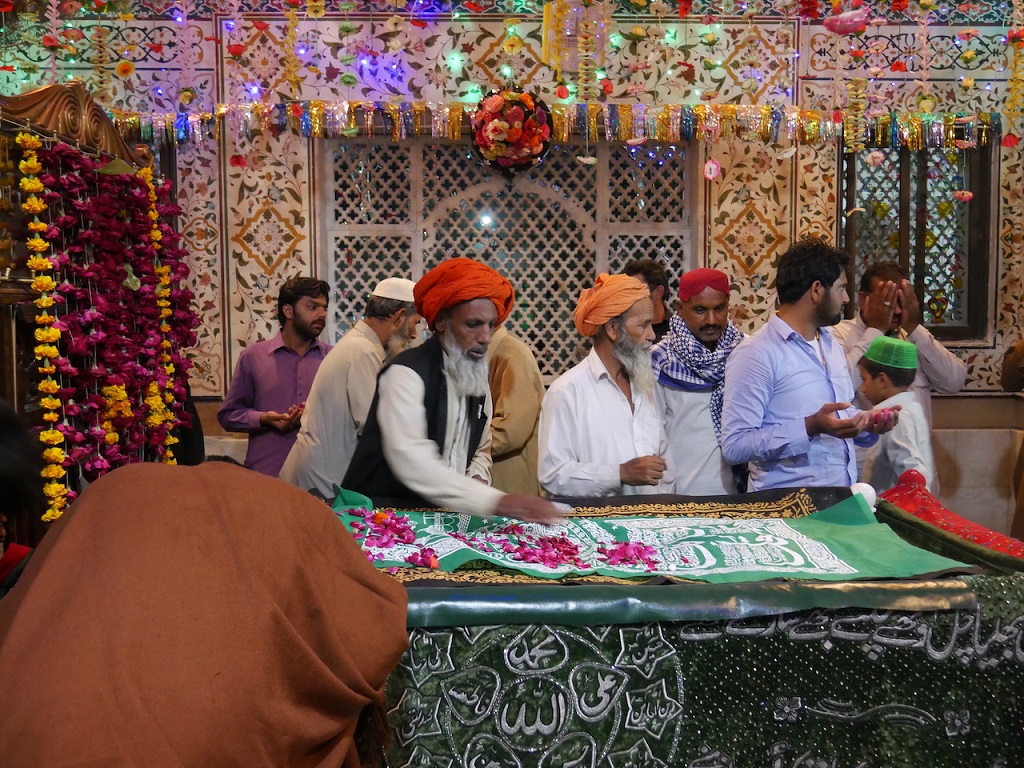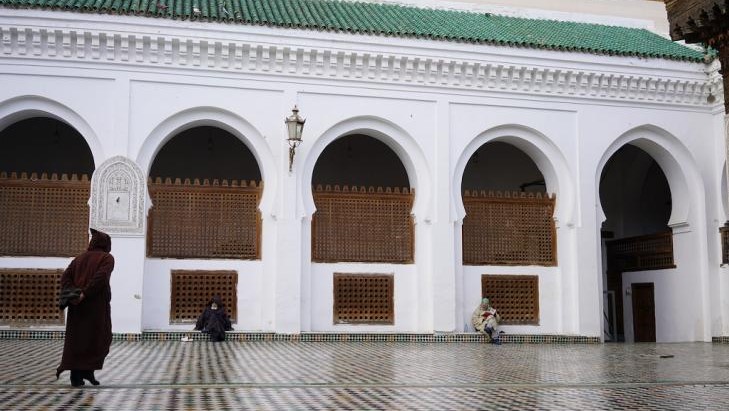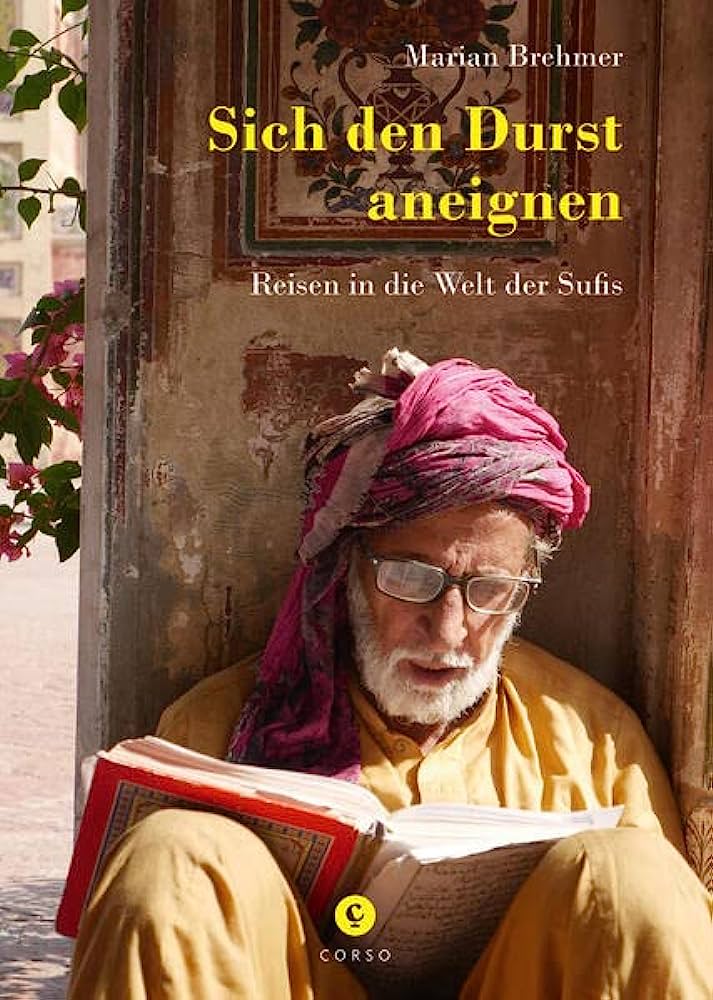A longing deep within us

How is it possible to write about mysticism when its true essence can't be captured in words? Author Marian Brehmer solves this problem by describing various different approaches that take us closer to its core. His book Sich den Durst aneignen ("Acquire thirst"), collates Sufi practices. Most prominent among these are poetry, music, the veneration of saints and sema, the meditative practice of spinning on your own axis which is often falsely described as a dance.
Where there are questions, answers will be given; where there are ships, water will flow. Spend less time seeking water and acquire thirst! Then water will gush from above and below. (Jalaluddin Rumi)
Following on from Der Schatz unter den Ruinen ("The treasure among the ruins"), Brehmer's second book takes us on another journey into the world of Sufism. Driven by his own "thirst" for spirituality and self-knowledge, in this book he focuses even more strongly on the sensory level. He works with photos, poems, interview extracts, background information and his own experiences.

The photos he has collected over the past few years, with their intense colours, are a particularly vivid reflection of how deeply involved he has become with the world of Sufism. The pictures also display Brehmer's eye for symmetry and his gift for observing quiet moments.
A gallery of photos
The four main chapters are put together from travels in the world of Sufism, and are divided up into regions: Anatolia and Syria; Persia; South Asia; Al-Andalus and Morocco. The book is more than just an attractive coffee-table volume, however, partly thanks to its spiritual clarity and intercultural sensitivity, which shines through at various points.
Brehmer knows the Sufi worlds in which he moves. He became acquainted with the spiritual life as a child in India, and has travelled a lot over the past 12 years. He took Iranian studies at university, speaks fluent Persian and Turkish, and lives in Turkey, where he has been based for several years now.
Each chapter provides an introduction to the cultural influences on how mysticism is practiced in these places, and in so doing helps us to understand the diversity inherent in Sufism.

The pleasure that Brehmer takes in wonder, travel, poetry and beauty comes across in his language, and the book's form and content are thus well suited to one another. His narrative style takes up an aspect of every mystic path: a tension between images that touches a wordless longing in us.
"The sleeping car in 'Sleeper Class' is a colourful potpourri of people and noises. A tea seller walks through the compartments carrying a heavy thermos flask. His nimble hands pour steaming, milky tea into cardboard cups. [...] A group of barefoot intinerant Hindu ascetics, swathed in saffron-coloured cloths, are engaged in animated conversation."
He goes on: "In the middle of all this, on one of the blue upholstered bunks, sit two older gentlemen whose bushy white beards identify them unmistakeably as Muslims. [...] Shortly after sunset, the two men take white prayer caps from their bags and, without getting up from the bunk, assume a more concentrated posture. Then they close their eyes, murmur the Fatiha, the first sura of the Koran, hunch their backs and place their hands on their thighs."

In contrast to his first book, the author chooses not to use first-person narration, although we see, smell and learn to understand these worlds from his point of view. But the book is not a theological treatise or geopolitical analysis, either. And that is not down to any lack of subject knowledge on the author's part.
Islamic mysticism is a living thing
The author’s expertise is evident in the foreword and the precision with which he describes phenomena such as the Ahi and other orders; Malang (Pakistani dervishes); people like the female Indian mystic Mirabai and the Persian saint Charakani; and peculiarities such as the introduction of music into religious practice by Moinuddin Chishti.
The author's spiritual clarity is shown in the book's core statement: the revolutionary thing about the mystical path is that you don't find God in temples, mosques and churches, but in your own heart. For this, your heart must be open and cleansed of all illusions.

The long path of inner transformation is not a straightforward one. The author describes this process in the words of the great Sufi master and poet Jalaluddin Rumi as "being cooked".
"You must forget yourself, If you want to find Him [God] at your side. (Strange are the times, Sain Bullhe Shah)".
The diversity of Sufism shows that Islamic mysticism is a living thing. This doesn’t apply to the other two Abrahamic religions to quite the same extent.
Jewish mysticism, kabbala, finds the majority of its followers in Hassidic communities in the USA and Israel. Christian mysticism is practiced in various individual religious orders, in the form of retreats (for meditation) and in contemplative orders such as the Carmelites.
The German-speaking world, however, lacks the visible, everyday forms of Christian mysticism.
And what we have lost here is more than just a great treasure on the Christian path to self-understanding.
The gap it leaves creates too much space for esotericism, which – just like an orthodoxy which is too worldly – can endanger a free spiritual life in any form of religion.
The more one engages with Christian mysticism, the more appealing it can become.
And it will be easier to gauge whether this might be one way to fall (back) in love with Christianity once we have access to "bridge-building" books like Brehmer's on Sufism for the Christian faith.
Until that point, it is worth taking inspiration from this book, because: "[t]he mystic knows that the countless spiritual paths of the world are like hiking trails that lead up different sides of a mountain to the same peak".
"There may be differences in the character and the vegetation of these paths – some are short and steep, while others wind slowly upwards over a long distance – but ultimately, the destination is the same".
© Qantara.de 2023
Translated from the German by Ruth Martin
